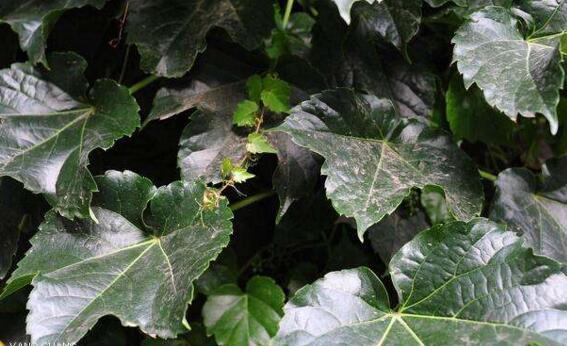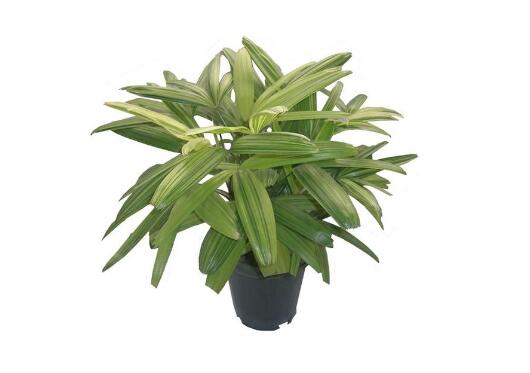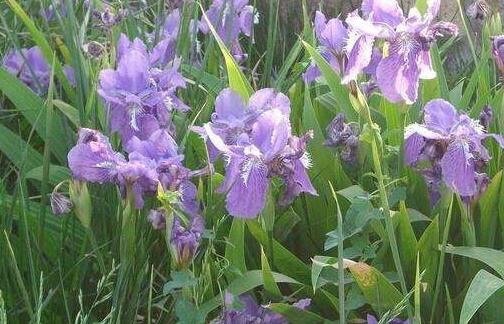How to reproduce Parthenocissus, Parthenocissus reproduce method Daquan / cutting / sowing / striping
Flower friends who have raised Parthenocissus know that its planting method is very simple, but there is one thing that some flower lovers are easy to ignore and do not understand, that is, reproduction, when we want a variety of pots, how to reproduce? Next, let's learn about the breeding methods of Parthenocissus.
How does Parthenocissus reproduce

There are three commonly used propagation methods of Parthenocissus, which are sowing, cutting and striping, respectively. Cutting is the easiest in the operation difficulty, but sowing and striping also have their own advantages. If it is a flower friend who has just been planted, it is recommended to use cutting. and the flower friends who are more experienced in planting can choose pressing or sowing.
A complete Collection of breeding methods of Parthenocissus
First, Parthenocissus parthenocissus sowing and breeding
1. When will Parthenocissus be sown
According to the experience of flower friends, Parthenocissus is the most suitable time for sowing in spring, the specific time is March, but the climate is different, so sowing in March-April is appropriate, to avoid sowing in autumn, otherwise rooting will be slow.
2. Sowing method
⑴, seed selection. The fruit period of Parthenocissus is from September to October, when the fruit changes from green to purple, it means that the fruit is ripe and ready to be picked, remove the pulp, rinse and dry, soak and disinfect with 0.05% carbendazim solution, and then store it in wet sand.
⑵, budding. In March of the following year, take the seeds out of the wet sand and soak them in 45 ℃ warm water for two days. in this process, you should pay attention to changing water twice a day, then mix the seeds with wet sand and seeds, with a ratio of 2 to 1, and then put the seeds in a sunny place to cover with grass, often spraying water to maintain humidity. 20 days later, the seeds show that the seeds are white and the germination is successful.
⑶, sowing. Put the soil into a container after softening and disinfection, water the soil and water it thoroughly, then sow the seeds in the soil, gently cover it with a little sand, and then cover it with plastic film for heat preservation and moisturizing.
⑷, maintenance. After cotyledons grow, you can uncover the film during the day and cover it at night to increase the temperature of the soil and make the seedlings emerge more neatly, and then often spray some water to keep the soil moist, and real leaves can grow after a period of time, and then transplant according to the needs.
2. Cutting propagation of Parthenocissus officinalis
1. Time: in the complete collection of Parthenocissus breeding methods, cutting is the simplest, but it is best to choose a good time in summer, the specific time is from June to July, the higher temperature is conducive to the rooting of cuttings, of course, it is necessary to avoid rainy days.
2. Methods: select 2-3-year-old branches from the plant of Parthenocissus Parthenocissus, it is best to select from the middle part, not just the top branch, cut it into a length of about 10 cm, and then soak it in rooting powder for about 1 hour.
Insert the treated branches into the soil, water them thoroughly and keep the soil moist. Pay attention to shade so that new branches can grow quickly. If it is a softwood cuttage success rate is also very high, but the later maintenance is very critical, such as the temperature is best kept at about 30 degrees is conducive to rooting.
Third, Parthenocissus creeper striping reproduction
Striping belongs to asexual reproduction, which means that under the condition that the branch is not separated from the mother plant, the branch is buried in waves on the way, and after a period of time it can grow new roots and leaves, and then it will be cut off from the mother plant and then replanted.
Breeding and breeding methods of Parthenocissus
Parthenocissus often climbs on the walls and rocks, of course, the figure of Parthenocissus can also be seen in landscaping. Then how to raise Parthenocissus? What are the methods of reproduction? Next, let's learn about Parthenocissus.
I. breeding methods of Parthenocissus
1. Soil: Parthenocissus does not have strict requirements on soil, it can thrive in wet or sunny environment, but it grows best in wet and fertile soil.
2. Lighting: Parthenocissus has strong adaptability, sexual preference for shady and humid environment, but not afraid of strong light, irradiating throughout the year.
3. Temperature: Parthenocissus is cold-resistant, drought-tolerant, barren-tolerant and has a wide range of climate adaptability. it can also maintain semi-evergreen or evergreen in winter to the south of the warm temperate zone, and the most suitable temperature is 15: 28.
4. Humidity: Parthenocissus is afraid of waterlogging, so we should pay attention to prevent soil water accumulation. Cut the stem vine 20~30cm in early spring, insert it into the open field nursery bed, irrigate and keep it moist, you can quickly draw the vine to survive, and you can also use the cuttings with twigs and leaves in summer and autumn, shade and water maintenance, and you can also quickly produce new branches, and the survival rate of cuttings is higher.
5. Fertilization: Parthenocissus can be applied with liquid fertilizer for 2-3 times during the growing period. And often hoe the grass and loosen the soil to avoid being submerged by the grass and promote its healthy growth.
6. Pruning: Parthenocissus is resistant to pruning. In the process of growth, the branches and vines of the doors and windows can be trimmed according to their feelings, so as to keep them clean, beautiful and convenient.
2. Breeding methods of Parthenocissus
1. Sowing method: the harvested seeds are rubbed to remove the peel and pulp, washed and dried and stored at low temperature in wet sand for a winter. Heat preservation and moisturizing are beneficial to sprouting. The seeds can be sowed in the early and middle of March of the next year, covered with film, and seedlings can emerge in early May. Nursery after 1-2 years of culture.
2. Cutting method: cut the stem vine 20~30cm in early spring, insert it into the open field nursery bed, irrigate and keep it moist, and quickly pull out the vine to survive. It can also be cut with twigs and leaves in summer and autumn, shaded and watered, and new branches can be produced quickly. The survival rate of cutting is high and widely used. The hardwood cuttings were carried out from March to April. The hardwood was cut into 10-15 cm sections and inserted into the soil, watered thoroughly and kept moist. Softwood cuttings were used to extract new branches of the same year and carried out in summer.
3. Striping method: the wavy striping method can be used to carry out in the wet and cloudless weather in the rainy season, and the survival rate is high. It can be separated and transplanted in autumn and planted the following year.
The above is the introduction of breeding methods and breeding methods of Parthenocissus. Friends who like Parthenocissus might as well take a look at it, and also want to know other knowledge of Parthenocissus to continue to pay attention to us.
How to plant Parthenocissus, how to plant Parthenocissus
Parthenocissus is actually a kind of plant with strong vitality, which is very lush and luxuriant in life on the walls and rocks. If you choose to plant Parthenocissus, then you must have the spirit to manage to the end, because Parthenocissus has great vitality, it is easy to survive in the corrosive cracks in the wall, Parthenocissus continues to breed and grow up, it is easy to destroy or even collapse the wall, so you must do a good job in cultivation and management when planting Parthenocissus. You still have to pay attention to the planting method of Parthenocissus. If you want to know how to grow Parthenocissus, you should take a good look at this article.
[morphological characteristics]
In fact, Parthenocissus looks like grapevines. It is a large deciduous woody vine that blossoms in summer. Do we seldom see the flowers of Parthenocissus at ordinary times, because the flowers are relatively small and blocked by dense branches and leaves, so it is difficult to find them at a long distance. The vine stem of Parthenocissus is very long, constantly spreading in growth, the branches are stout grayish brown, and there are tendrils on the branches. when we were young, we thought they were the feet of Parthenocissus. It's funny to think about it now that we can climb step by step. However, it is not groundless to compare tendrils to the feet of Parthenocissus, because the surface of tendrils has a very sticky sucker, and the tendrils can be attached to walls and rocks thanks to its feet.
[living habits]
We have just mentioned that Parthenocissus has tenacious vitality, so you can imagine the habits of Parthenocissus. Parthenocissus likes relatively humid environment, with the characteristics of cold tolerance, drought tolerance, barren tolerance, and extensive climate adaptation. Parthenocissus can thrive in shady and humid environment, but also has the characteristics of resistance to pruning. Of course, if it is said to grow in wet but fertile soil, the growth rate of Parthenocissus is amazing, but it should be noted that even though Parthenocissus is not so picky about the growth environment, but Parthenocissus still has a considerable weakness, that is, it is afraid of stagnant water, which will cause the roots of Parthenocissus to rot.
[planting method]
Friends who want to plant Parthenocissus can start to plant after understanding the characteristics and living habits of Parthenocissus, so how to grow Parthenocissus? What are the planting methods of Parthenocissus? According to the tenacious vitality of Parthenocissus, I have summed up three planting methods of Parthenocissus. Let's take a look.
Sowing method
The first thing I would like to introduce is, of course, the easiest sowing method. After removing the pericarp and pulp, the collected Parthenocissus seeds are washed and stored at a low temperature in wet sand for a winter, but pay attention to heat preservation and moisturizing at any time. They can be sown in the early spring of the next year, covered with thin film, and the seedlings can emerge in two months.
Cutting method
In early spring, take the stems of Parthenocissus from 20cm or so, insert them into the open-field seedbed, water them and keep them moist, and you will soon see new buds sprouting. It can also be used in summer and autumn with twigs and leaves, shaded and watered, and new branches can be produced quickly. The survival rate of cutting is high and it is widely used.
Strip pressing method
The striping method needs to be carried out in overcast and rainy weather so that the survival rate can be much higher. The striping method mainly uses the wavy striping method to press the branches of Parthenocissus into the soil, which can be separated and transplanted in the autumn and customized cultivation in the next year.
[notes]
In the cultivation of Parthenocissus should pay attention to pathological changes and insect pests, and do regular fertilization and management, Parthenocissus is afraid of waterlogging, we should pay attention to prevent soil water. If you do not want the mountain creeper to be born too fast, it is necessary to do proper pruning. Parthenocissus is very resistant to pruning. In the process of growth, you can trim and trim the branches of the doors and windows according to your feelings, so as to keep them clean, beautiful and convenient.
Conclusion: now you know how to grow Parthenocissus. If you don't know how to grow Parthenocissus, you can consult more relevant materials. The characteristics of easy survival of Parthenocissus also save a lot of heart in the process of cultivation. All right, this is the end of this article on how to grow Parthenocissus and the planting method of Parthenocissus. I hope it will be helpful to you.
- Prev

How to propagate brown bamboo, the propagation method / sowing propagation / ramet propagation of brown bamboo
Brown bamboo is a kind of highly ornamental plant, and it is cultivated all over our country. With more and more people raising brown bamboo, people are more concerned about its reproduction. About how brown bamboo propagates? What are the breeding methods of brown bamboo? Next, the editor will take you to learn about it.
- Next

How to propagate Gladiolus, the propagation method / dividing ball / cutting ball / tissue culture of Gladiolus can be
Gladiolus is a very popular fresh cut flower, as long as it is cultivated properly, it grows very fast. Generally, a female ball can produce a lot of balls after 1 year, and these balls can be used for reproduction, so how can Gladiolus reproduce? The editor is here to tell you three common breeding methods of Gladiolus.
Related
- Fuxing push coffee new agricultural production and marketing class: lack of small-scale processing plants
- Jujube rice field leisure farm deep ploughing Yilan for five years to create a space for organic food and play
- Nongyu Farm-A trial of organic papaya for brave women with advanced technology
- Four points for attention in the prevention and control of diseases and insect pests of edible fungi
- How to add nutrient solution to Edible Fungi
- Is there any good way to control edible fungus mites?
- Open Inoculation Technology of Edible Fungi
- Is there any clever way to use fertilizer for edible fungus in winter?
- What agents are used to kill the pathogens of edible fungi in the mushroom shed?
- Rapid drying of Edible Fungi

